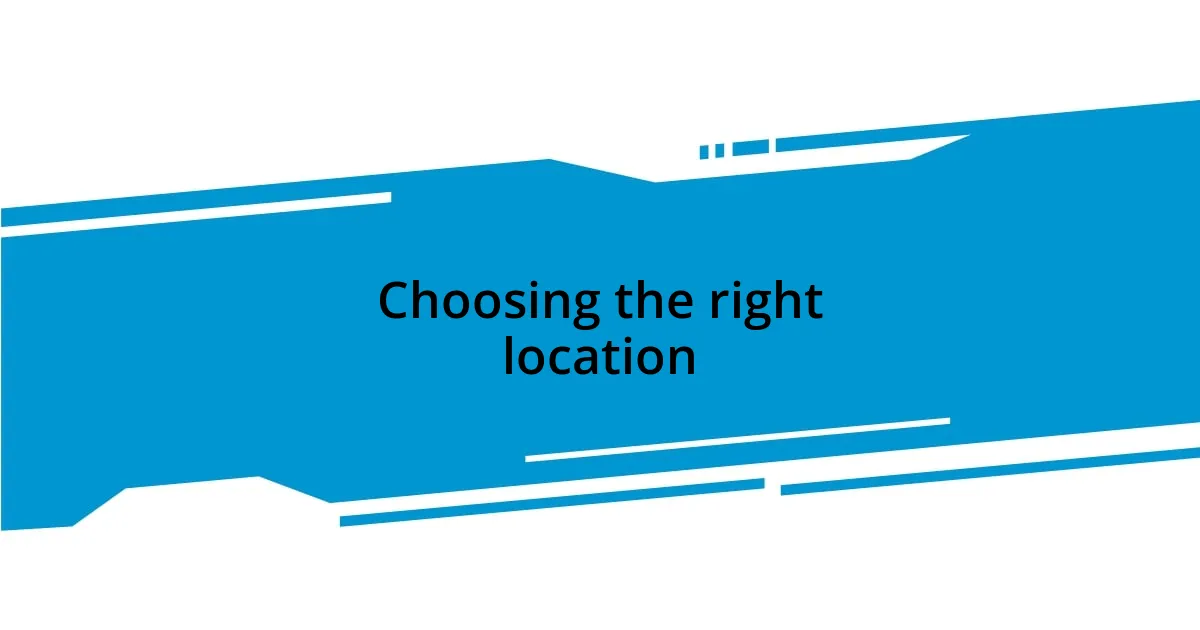Key takeaways:
- Business retreats enhance team relationships through shared experiences and creative environments, leading to deeper trust and collaboration.
- Choosing a suitable location balances inspiration with accessibility, impacting participant engagement and creativity.
- A well-structured agenda combines intensive work sessions with downtime, fostering productivity and team bonding.
- Effective follow-up strategies, such as thank-you notes and shared resources, help maintain connections formed during retreats, leading to lasting collaborations.

Benefits of business retreats
One of the most significant benefits of business retreats is the chance to build stronger relationships among team members. I remember attending a retreat where we spent time sharing personal stories, which broke down barriers. Isn’t it amazing how a casual conversation over coffee can lead to deeper trust?
Additionally, retreats provide a unique space for creativity to flourish. I’ve found that stepping away from the regular office environment sparks fresh ideas. Think about it: when was the last time you had a breakthrough moment, just because you were in a new setting?
Finally, the time away allows for focused discussions around big-picture goals. During one retreat, we crafted a strategic plan in just a few days, simply because we eliminated our usual distractions. Can you picture how a shared vision, developed in a relaxed atmosphere, can propel a team forward?

Choosing the right location
When it comes to choosing the right location for a business retreat, the setting can truly make or break the experience. I once selected a lakeside cabin that not only provided breathtaking views but also offered a sense of tranquility. Have you ever sensed how the right backdrop can ease stress and encourage open dialogue? It’s incredible what nature can do for the mind.
Equally important is accessibility. I recall a retreat held in a remote location that was absolutely stunning, yet arriving there felt like an odyssey. It was a reminder that while seclusion can foster creativity, that isolation often deters participation. A balance between inspiration and convenience is key when making your decision.
Lastly, consider the amenities available. I’ve been to retreats where the facilities were lacking, which limited what we could do together. You want a venue equipped for both work and relaxation, creating a seamless transition between brainstorming and team bonding. After all, isn’t a harmonious blend of productivity and leisure what retreats are all about?
| Location Type | Pros |
|---|---|
| Nature Retreat | Promotes relaxation and creativity |
| Urban Setting | Easy access to amenities and transportation |
| Resort | Blends relaxation with professional meeting spaces |
| Remote Cabin | Encourages focus away from distractions, yet can be hard to access |

Creating a balanced agenda
Creating a balanced agenda is crucial for maximizing the effectiveness of any business retreat. I remember meticulously planning a retreat where we strategically alternated between intensive brainstorming sessions and more relaxed, informal gatherings. This blend not only maintained our energy levels but also sparked innovative ideas during our downtime. Balance is key; you want to both engage and refresh your team.
To achieve this, consider the following elements for your agenda:
– Workshops: Skill-building sessions that resonate with your team’s goals.
– Team-building Activities: Fun exercises that foster collaboration and trust.
– Downtime: Scheduled breaks for informal chats or personal reflection.
– Outdoor Activities: Engage with nature to rejuvenate and inspire.
– Feedback Sessions: Create space for reflection and collective input on ideas discussed.
When I structured an agenda like this, the results were incredible. Each session flowed into the next, allowing us to dive deep into discussions while reinforcing relationships. It’s a dance between productivity and relaxation—finding that rhythm can profoundly impact your team’s outcomes.

Incorporating team-building activities
Incorporating team-building activities into a business retreat is a game-changer. I recall one retreat where we kicked off with an icebreaker game that had everyone laughing. It broke down barriers almost instantly—it’s amazing how a few simple activities can turn a group of strangers into a cohesive team. Have you thought about how shared laughter can create bonds that last beyond the retreat itself?
I’ve also found that outdoor challenges can be incredibly effective. A ropes course we tackled not only pushed us out of our comfort zones but also built trust among colleagues. Watching my team encourage one another was inspiring; you could feel the powerful shift in energy. What better way to reinforce teamwork than by relying on each other to navigate physical challenges together?
Finally, I like to include a creative team-building activity, such as a collaborative art project. Mixing paint and ideas opened up a dialogue that wouldn’t have happened in a traditional meeting setting. It felt freeing to express ourselves artistically, and I sensed a newfound appreciation among team members for each other’s perspectives. Wouldn’t you agree that creativity often leads to unexpected insights?

Maximizing networking opportunities
Maximizing networking opportunities during a business retreat can transform the experience from merely transactional to incredibly meaningful. I once attended a retreat where we set aside designated “networking hours,” allowing everyone to intentionally mingle. These moments were like gold; I forged connections that led to collaborations I hadn’t anticipated. Have you ever realized how a simple conversation over coffee can spark a project you didn’t even know you needed?
One of my favorite strategies is to create small discussion groups based on shared interests. At one retreat, we formed breakout sessions around particular topics, which encouraged deeper engagement. I’ll never forget the vibrant conversation that erupted when we dove into digital marketing trends. Each participant brought unique insights, igniting a dynamic exchange that extended well beyond the session. How often have you left a discussion feeling inspired, thinking, “I can’t wait to follow up on that”?
Lastly, I’ve found that following up post-retreat can be just as important as the networking opportunities at the event. After a particularly fruitful retreat, I established a shared online platform for attendees to continue discussions and share resources. It was gratifying to see connections flourish over weeks, demonstrating that the bonds made during those few days have lasting potential. Isn’t it wonderful to think that the relationships you nurture today can blossom into tomorrow’s opportunities?

Implementing effective follow-up strategies
Implementing effective follow-up strategies is crucial for nurturing the connections made during a business retreat. After one memorable retreat, I made it a point to send personalized thank-you notes to everyone I had meaningful conversations with. This simple gesture not only showed my appreciation but also kept the lines of communication open, transforming fleeting introductions into lasting relationships. Have you ever sent a quick note and felt the immediate warmth of reconnection?
Another strategy I’ve employed is scheduling follow-up calls. A particularly fruitful conversation during a retreat about sustainability initiatives prompted me to reach out for a deeper discussion weeks later. I’ve found that these calls not only reinforce the initial connection but also provide an opportunity to collaborate on projects that might have been just ideas at the retreat. Isn’t it fascinating how a 15-minute chat can evolve into a full-fledged partnership?
I also like to curate and share a digital resource hub for retreat attendees. After one enlightening retreat on innovation, I created a shared Google Drive where all participants could upload their favorite articles and tools related to our discussions. This collaborative space became a vibrant platform for ongoing dialogue and support—people were thriving off each other’s insights well beyond our time together. Don’t you think it’s amazing how technology can keep that retreat spirit alive long after the last session ends?

Measuring success and impact
Measuring success and impact at a business retreat involves evaluating both tangible outcomes and personal growth. After one retreat focused on leadership development, we created a survey to assess our experiences. Seeing the positive feedback highlighted how participants felt more empowered and supported—some even shared that they returned to work energized and ready to implement new strategies. Isn’t it powerful to quantify inspiration?
I’ve also learned the value of reflecting on the discussions and brainstorming sessions during the retreat. At a gathering centered around team dynamics, we took time to jot down our key takeaways and actionable steps. When I revisited those notes weeks later, I was struck by how many ideas had blossomed into real changes within my team. Have you ever considered how revisiting your insights can shape your future actions?
In my experience, the most impactful measure of success is the lasting changes in teamwork and communication. After a retreat on conflict resolution, our follow-up meetings revealed a renewed sense of collaboration among team members. One colleague even told me they now approached disagreements with a mindset of curiosity instead of defensiveness. Isn’t it rewarding to witness growth like that?
















